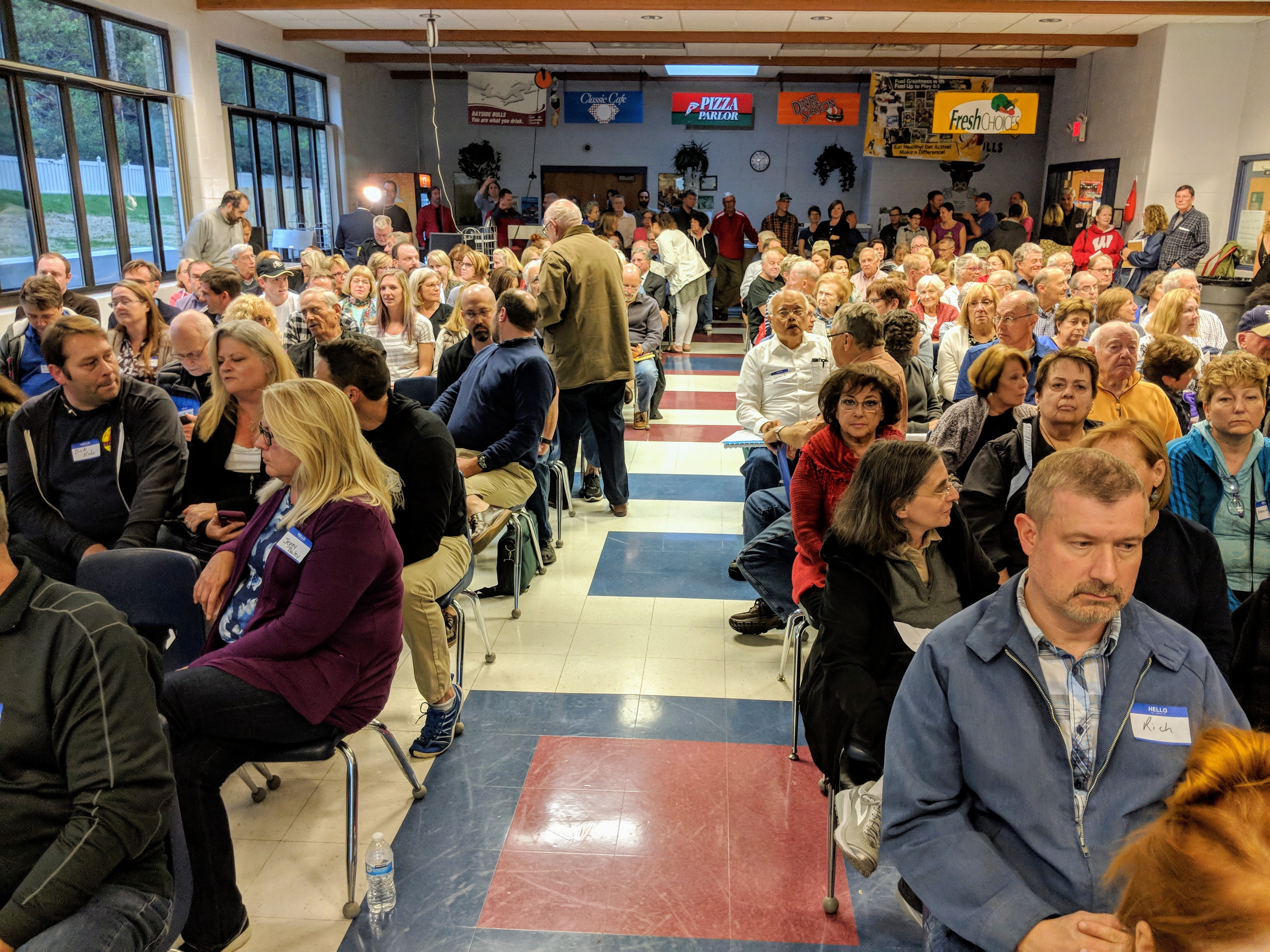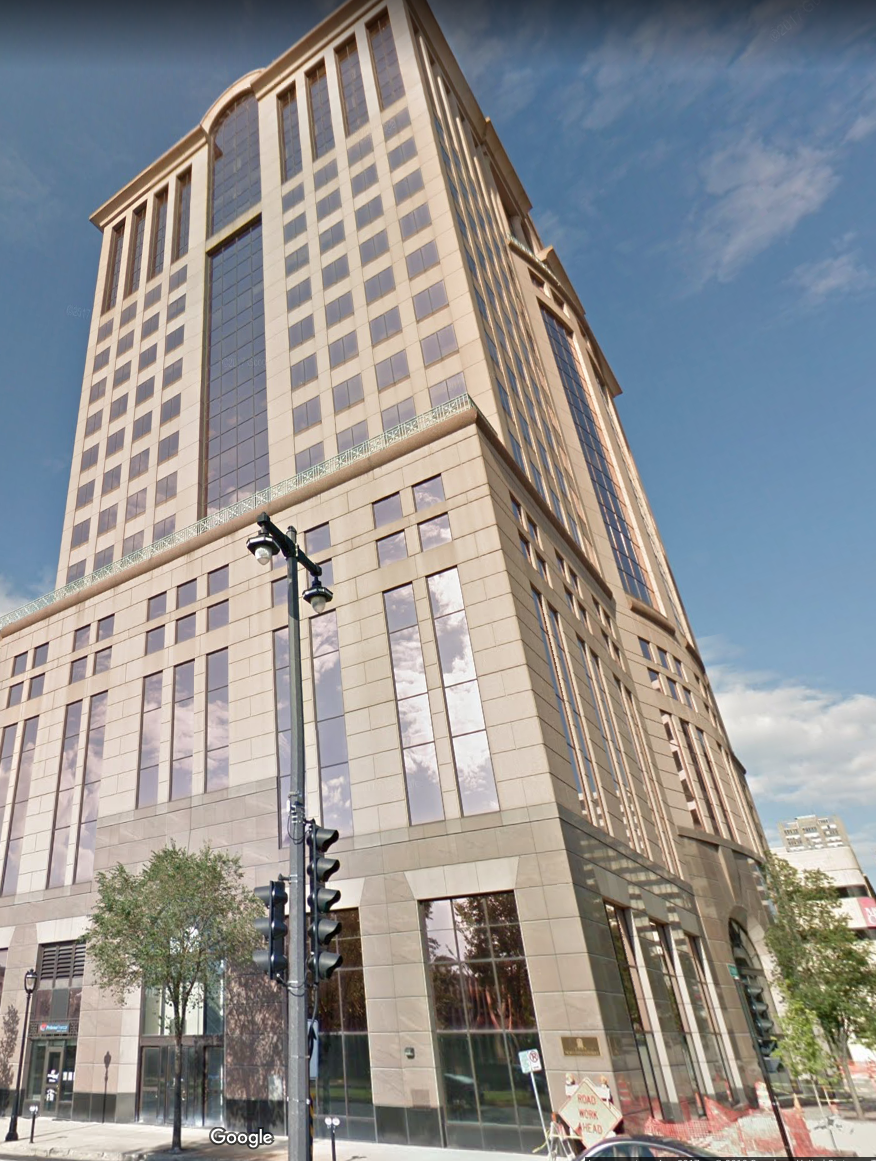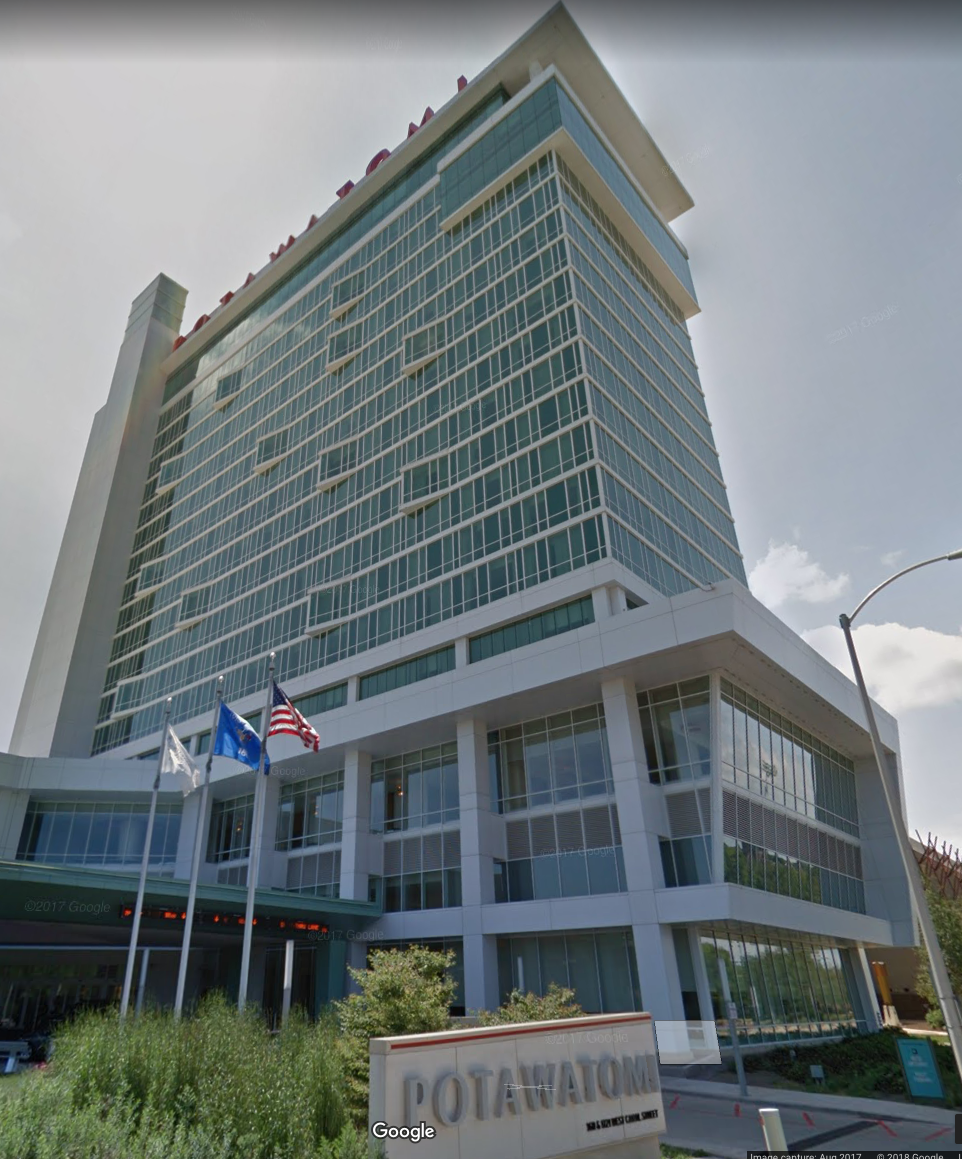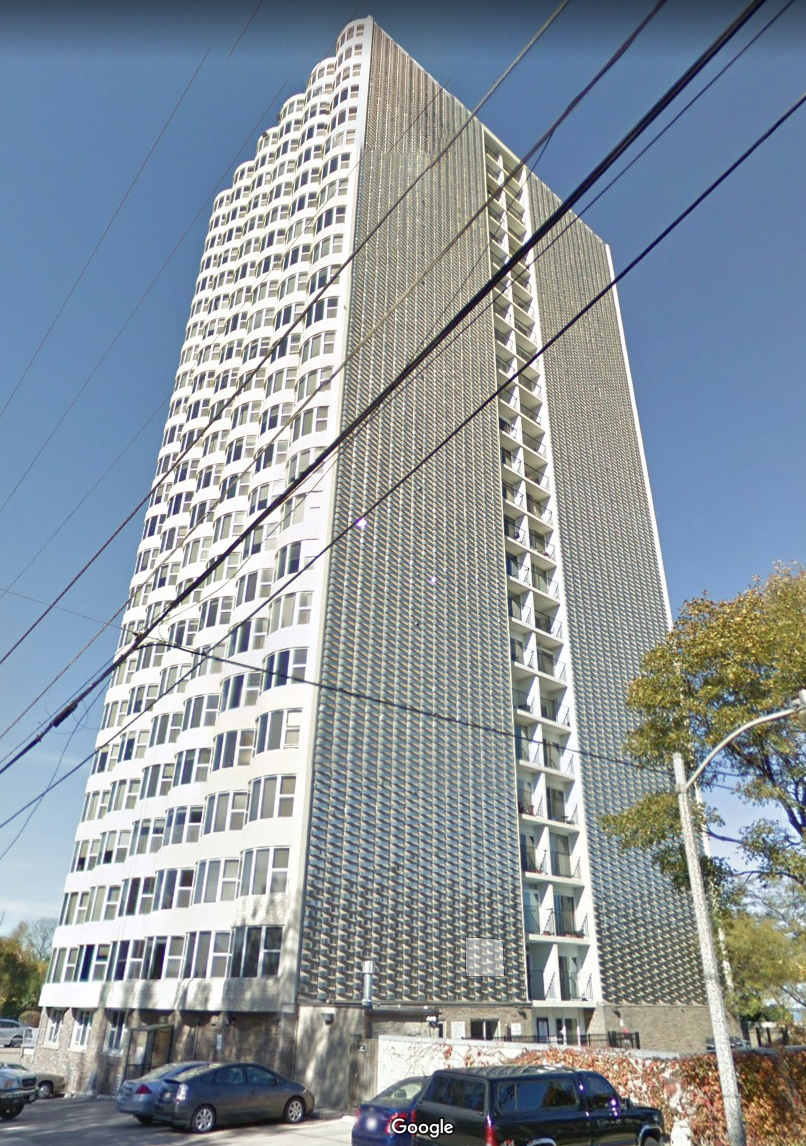OneNorth: a project that’s compromised and cannot succeed
Dear Neighbors,
NoBaysideSkyscraper.com was setup to educate the Milwaukee suburbs about Cobalt Partners plans to build one of the tallest skyscrapers in Wisconsin in our tiny Village of Bayside, and the fact that they were requesting $43 million in financing from our village via a Tax increment financing(TIF) scheme.
The proposal was in clear violation of the MUNICIPAL CODE OF THE VILLAGE OF BAYSIDE, WISCONSIN, which limits building heights to 3 stories or 35 feet.
After a Public Hearing, the Bayside Community Development Authority “asked the developer to reconsider the submission, taking into consideration comments by village residents.”
We thought the fight was over, but in response, the developer Scott Yauck told the Milwaukee Journal Sentinel. “Village officials haven’t asked him to drop the high-rise portion. We’re certainly open to their concerns, but we’re not willing to create a project that’s compromised and cannot succeed.” Ironically, this was our thoughts about the original proposal.
We ask you now to continue to stand with us, and ask the Bayside Village Trustees to:
- Formally request Cobalt Partners to drop all features that violate our municipal code.
The new proposal must also be “compatible with the general character of the village, and not be contrary to the general welfare and economic prosperity of the village or of the immediate neighborhood, but rather that the benefits from improved design of the resultant development justifies the variation from the normal requirements”
Attend the next Village Board Meeting
Thursday, October 18, 2018
Village Board Room
9075 N Regent Road
Or call your representatives:
Bayside Village Trustees
- Samuel D. Dickman
9410 N Lake Drive, 414-352-6598
sdickman@baysidewi.gov
Term Expires 4/20 - Margaret Zitzer
921 E Glenbrook Road, 414-352-3574
mzitzer@baysidewi.gov
Term Expires 4/21 - Mike Barth
9270 N Waverly Drive, 414-228-7203
mbarth@baysidewi.gov
Term Expires 4/19 - Robb DeGraff
9211 N Regent Road, 414-351-4229
rdegraff@baysidewi.gov
Term Expires 4/20 - Daniel M Muchin
411 E Ravine Baye Road, 414-351-0866
dmuchin@baysidewi.gov
Term Expires 4/21 - Dan E Rosenfeld
9280 N Broadmoor Road, 414-617-8682
drosenfeld@baysidewi.gov
Term Expires 4/20 - Eido Walny
9440 N Fairway Drive, 414-751-7531
ewalny@baysidewi.gov
Term Expires 4/19
For Further Information See:
- It would be the only apartment tower in Milwaukee’s North Shore area. And that’s what’s driving the opposition. Tom Daykin, Milwaukee Journal Sentinel Published 11:51 a.m. CT Sept. 14, 2018
- Bayside high-rise development could get nearly $43 million in public financing help, Tom Daykin, Milwaukee Journal Sentinel Published 9:49 a.m. CT Sept. 17, 2018
- Bayside cancels meeting on financing plan for high-rise after residents raise concerns, Tom Daykin, Milwaukee Journal Sentinel, Published 12:31 p.m. CT Oct. 3, 2018
- Bayside officials ask high-rise developer to consider possible changes to controversial proposal, Tom Daykin, Milwaukee Journal Sentinel, Published 10:06 a.m. CT Oct. 9, 2018
Click here to donate at our GoFundMe site or send us an email
Roundy’s Metro Market TIF Is Bad News for Shorewood Taxpayers
Roundy’s IS SUING THEM according to the Journal Sentinel article posted here
Apparently Roundy’s feels the increased assessed value isn’t correct and filed an objection to the assessment with the Shorewood Board of Review.
“Until the TIF closes, taxpayers will be paying for the village services the store requires”
Remember the part that was mentioned in the Bayside TIF informational meeting where the developer/owner pays property taxes on the increased value of the TID until the TIF is paid off. And don’t forget we’re told the taxpayers are protected from any financial loss.
Substitute Cobalt Partners and Bayside, and well, you get the idea what you and your kids may be stuck with.
Side note:
Max Dickman, Chairman for the Village of Bayside Zoning & Appeals committee and Sam Dickman’s son, who spoke in support of the 43M TIF for Cobalt Partners at the CDA meeting was previously the Real Estate Development Manager for Roundy’s.

The 30-story tower height will be comparable to:
- US Bank Center – 42 stories
- Northwestern Mutual Tower – 32 stories
- 100 East Wisconsin – 37 stories
- University Club Tower – 36 stories
- Milwaukee Center – 28 stories
- 411 East Wisconsin Center – 30 stories
- The Moderne – 31 stories
- The Potawatomi Casino Hotel – 21 stories
- Bay View Terrace – 25 stories
- Wisconsin Tower – 22 stories
- Wisconsin State Capitol – 15 stories
and visible for 10-20 miles.
The proposal will change the village and the whole Milwaukee North Shore, forever.
What We Heard From Residents At This Meeting

- Community Development Authority Public Hearing
September 27, 2018, 6:00 PM
@ Bayside Middle School Cafeteria
601 E Ellsworth Lane
- Vast majority of 300+ residents in attendance oppose the TIF and 30-story skyscraper
- Sam Dickman’s son, Max Dickman, supports the TIF and 30-story skyscraper
- CDA member and Trustee Dan Rosenfeld has prior business relationship with Cobalt Partners and has not recused himself despite the appearance of a conflict of interest
- Cobalt Partners principal, Scott Yauck, has had numerous lawsuits related to taxes, project disputes and an eviction from his home
- Residents concerned about impact on property values, traffic increase, crime and view of 30-story skyscraper
- Unknown additional costs for police, fire, street, wastewater and schools to be borne by residents for duration of TIF
- No property tax relief outside of TID for duration of TIF – 18 – 27 years estimated
- Existing property tax revenue from this area frozen at current value as of January 1, 2019 for duration of TIF
- What will this property look like and what will be the taxable value in 27 years?
- Village hired public relations firm that is reimbursed by Cobalt Partners
- Residents overwhelmingly demanded a Village referendum to determine the fate of the TIF and this development that will forever infect semi-rural Bayside with urban sprawl
Village of Bayside Conflict of Interest Statement
Village of Bayside Master Plan
Section 14 (page 26) “It is expected that any plan for development will be complimentary to the Village’s Master Plan” yet there are currently no proposed changes to the Master Plan map, building codes or other Village ordinances for the implementation of this Plan.
The TID does not fit the Master Plan.
Project Plan for the Creation of Tax Incremental District
Read the Project Plan and be prepared to ask the CDA committee and Village Trustees why they support this project
The future of our village depends upon YOU.
The Costs of TIF Use
Because TIF districts pay for improvements through future tax revenues, many people consider TIF ‘getting something for nothing’. This is simply not true. In fact, using TIF carries significant costs, beyond just the dollar value of improvements made in the district.
These costs fall into five general categories:
Direct Costs: When most people discuss the cost of a TIF district, they are referring to direct costs. Direct costs are the costs of the physical improvements (including labor costs) within the district, the administrative costs of managing the district, the costs of any consultancies and/or developer incentives and the costs of financing all these expenditures.
Service Costs: Although not commonly included in TIF accounting, local governments take on new service costs during the life of each TID. New development increases demand for city, county, and school district services— demand not accompanied by increases in tax revenue to provide these services. For instance, a new subdivision will send more kids to school, require additional snow and trash removal and need more road maintenance. Providing these services is costly and, over the full life of a TID, can add up to millions of dollars.
Fixed Tax Base Costs: Fixed tax base costs are the costs of lost tax revenue on private development that would have occurred without TIF. When the ‘but for’ test is administered with 100 percent accuracy the fixed tax base cost of a TID is zero. In many cases, however, the property included in TIF districts would generate some form of privately-funded development over the TID’s life without any subsidy. If the property had not been included in a TID, local governments could receive taxes on this development immediately instead of it being diverted to pay off TID project costs.
Opportunity Costs: Using TIF also imposes opportunity costs on local governments in two ways. First, by approving one project plan for TID development, local governments eliminate the opportunity to develop that piece of land in a different manner. For example, if a project plan allocates TIF funds for the creation of an entertainment district, it eliminates the possibility of developing that land into an industrial corridor. Second, when one TID is created, it limits the municipality’s ability to use TIF elsewhere within the community, because state law limits the amount of property value which municipalities can include in TIF districts.
Negative Externality Costs: Improper planning and land use is costly to a community. As a development tool, TIF can contribute to these costs when used unwisely. If TIF is used to subsidize greenfield development on the urban fringe it contributes to sprawl, congesting commuter corridors and increasing pollution. If TIF lures businesses away from dense urban centers, it contributes to the spatial mismatch between jobs and employees, simultaneously creating labor shortages and unemployment. Likewise, if TIF is used to attract employers that do not pay living wages, the public bears the cost of wage supplements and social services for the working poor.
Are You Concerned?
Contact the Bayside Village Trustees
- Samuel D. Dickman
9410 N Lake Drive, 414-352-6598
sdickman@baysidewi.gov
Term Expires 4/20 - Margaret Zitzer
921 E Glenbrook Road, 414-352-3574
mzitzer@baysidewi.gov
Term Expires 4/21 - Mike Barth
9270 N Waverly Drive, 414-228-7203
mbarth@baysidewi.gov
Term Expires 4/19 - Robb DeGraff
9211 N Regent Road, 414-351-4229
rdegraff@baysidewi.gov
Term Expires 4/20 - Daniel M Muchin
411 E Ravine Baye Road, 414-351-0866
dmuchin@baysidewi.gov
Term Expires 4/21 - Dan E Rosenfeld
9280 N Broadmoor Road, 414-617-8682
drosenfeld@baysidewi.gov
Term Expires 4/20 - Eido Walny
9440 N Fairway Drive, 414-751-7531
ewalny@baysidewi.gov
Term Expires 4/19
The Bayside Village Board of Trustees has the authority for management of local property, including the adoption of zoning ordinances and FINAL DECISIONS ON DEVELOPMENT PROPOSALS.
Contact the Community Development Authority
Vote NO TIF District
- Samuel D. Dickman, Chairman
9410 N Lake Drive, 414-352-6598
sdickman@baysidewi.gov - Dan Rosenfeld
9280 N. Broadmoor Road. 414-617-8682
drosenfeld@baysidewi.gov - Amy Krier
Akrier@certuslegalgroup.com
414-939-8371 - Barry Goldman
Barry@barrygoldmancpa.com
262-478-0417
- Ned Purtell
Npurtell@founders3.com
414-249-2330 - Marty Greenberg
Mjg@martygreenberglaw.com
414-271-4849
- Bob Rudman
414-358-5101





